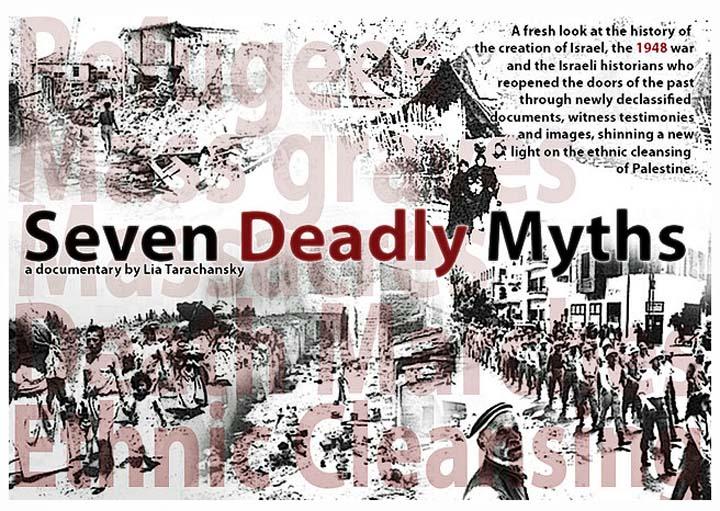SYNOPSIS
In the winter of 2011 I will be fundraising to finish filming this documentary, so please consider supporting the film.
ISRAEL/PALESTINE - SEVEN DEADLY MYTHS - 55 min [Spring 2011]
Seven Deadly Myths examines the concept of denial, of knowing and not knowing at the same time. It starts as director Lia Tarachansky returns to her West Bank settlement of Ariel. She discovers, as though for the first time, that it’s surrounded by Palestinian villages. She learns the Palestinians were not made invisible by accident and that their displacement did not start in the West Bank. In this film she speaks to those who began this project of dispossession.
1948 marks the year of the first Israeli-Arab war and the Nakba (Arabic for Catastrophe) for it was then that most of the Palestinian population became refugees. This documentary goes beyond the historical debate over the seven tenets that comprise the Israeli national narrative of that war, now recognized as myths. It follows the stories of those who participated in it. As 1948 veteran Amnon Noiman tells in his testimony, “We came here to inherit the land from the hands of strangers. That was the basis of our thinking- to inherit the land. And he who inherits, dispossess others. That's why we wouldn't let them return."
Hava Keller, also a 1948 veteran was based in one of the original settlements and participated in the mass expulsion of Palestinians from Be’er Sheva. “Anyone who was in a combat unit participated in expulsions,” she says. “At the end of the war I worked in agriculture and every day we [drove by] a Palestinian village. One day in the morning I went to work as usual…when I came back from work, no village.” She describes the systemic demolition of hundreds of Palestinian towns and the attempt to rewrite the past.
Today only a few lonely remnants remain hauntingly on the sides of Israeli highways as cars drive by. In the heart of corporate Tel Aviv business people rush past bits of ancient walls hugged by modern concrete. Israeli children learn to count in kindergarten to pictures of tanks, missiles, and AK47s. Lia explores this landscape of denial of the year that to this day remains the biggest taboo in Israeli society and whose legacy continues to drive the conflict.

